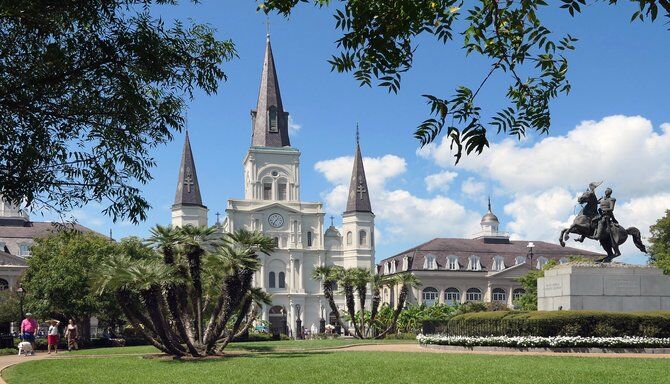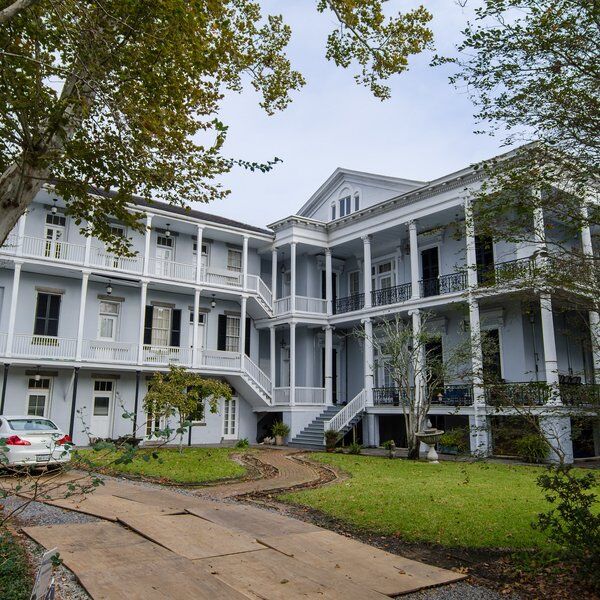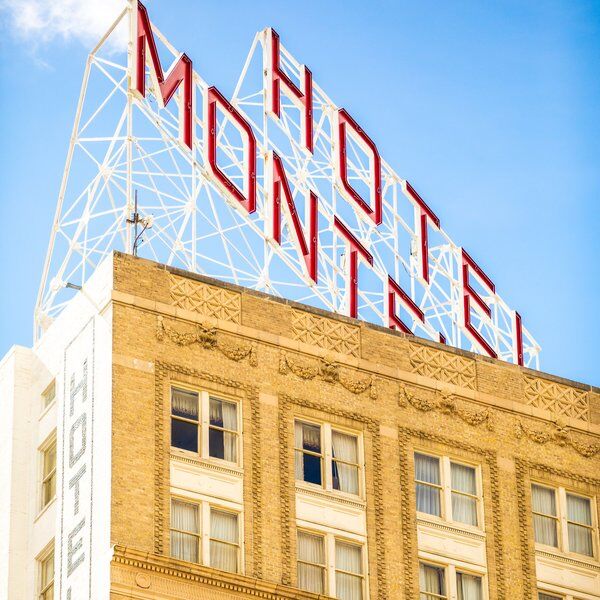
Exploring the St. Louis Cathedral in New Orleans
The triple steeples of the St Louis Cathedral rise proudly from the heart of New Orleans’ French Quarter, opposite Jackson Square, like something out of a disney movie. Overlooking the Mississippi River and surrounded by the Cabildo and Presbytery, the cathedral is recognised as one of New Orleans’ most iconic landmarks. Because it was constructed in 1727, it is among the oldest Roman Catholic cathedrals in continuous use in the United States.
Devastation in the form of a fire ravaged the original French and Spanish inspired building in 1788, which underwent renovations. The present structure, completed in the 1850s, continues to serve as the mother church of the Archdiocese of New Orleans, dedicated to King Louis IX of France, renowned for his devotion to the Catholic faith.
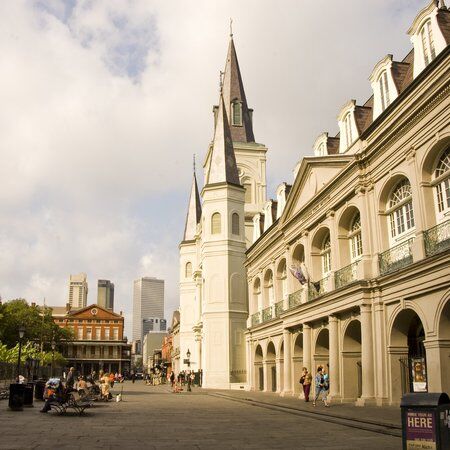
The History of the St Louis Cathedral
Early History
A church has existed on the site of St Louis’ Cathedral since 1718. In 1721, French engineer Adrien De Pauger chose the land upon which a new church, dedicated to Louis IX, the sainted King of France, would be built. Unfortunately, De Pauger passed away before his vision could come to fruition and his remains were laid to rest inside the unfinished church.
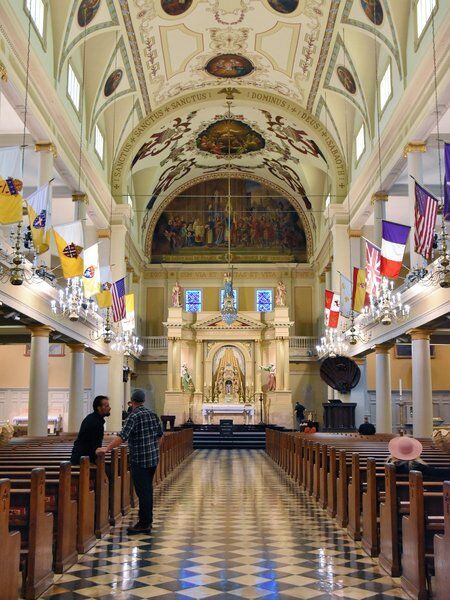
A Year of Devastation: 1788
In 1788 a fire ransacked the cathedral and surrounding structures, including the priests' residence and the Cabildo. Ignited by a candle in the home of the military treasurer, Vincente Jose Nunez, on Chartres Street, the fire was so severe that it left the church in ruins. Efforts to reconstruct the cathedral commenced in 1789 and the new church was completed in 1794.
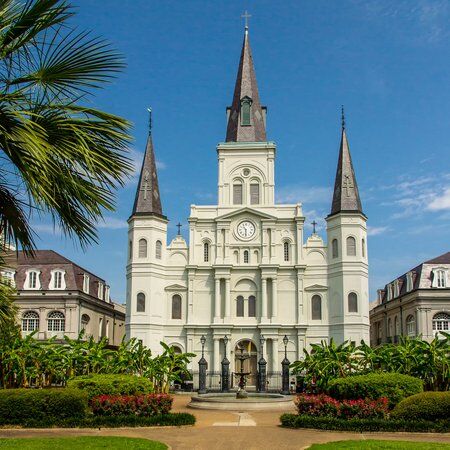
19th Century Expansion
Throughout the early 19th century there were several renovations made to expand the St Louis Cathedral, necessitated by the city’s growing population.
“He thanked me, and I had the bell brought within the Church. After High Mass, he arranged a procession to the bell and regularly baptised her by the name of Victoire, the name embossed upon her by the founder.”
In 1819, a central tower housing a clock and bell was added. The addition was orchestrated by esteemed architect Benjamin Henry Latrobe and named "Victoire" to honour the Battle of New Orleans victory. Further plans were initiated in 1849 to enlarge and restore the building.
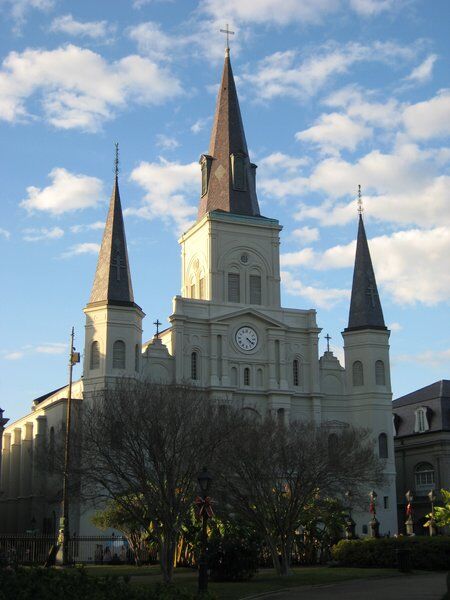
The Cathedral in the 20th Century
In the early 20th century several changes and significant events occurred at St Louis. Firstly, in 1906 a church census revealed that Mass at the cathedral was conducted in both English and French. However, this changed in 1910 when the sacramental register transitioned from French to English. By the early 1920s, English had become the predominant language among worshippers.
In April 1909, a dynamite bomb shattered (alongside the peacefulness) the cathedral’s beautiful windows, with damage also caused to the galleries. Following the bombing, the cathedral experienced a partial foundation collapse the following year, leading to its closure for repairs from Easter 1916 to Easter 1917.
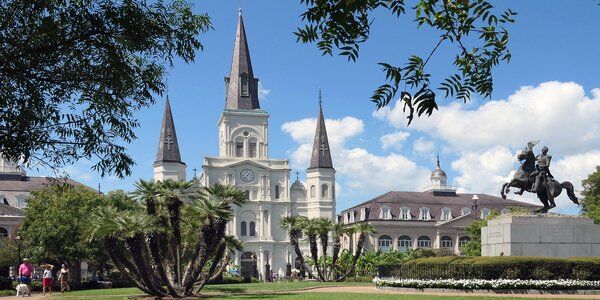
Visitors of the Cathedral
The cathedral attracts many worshippers and visitors throughout the year. They are drawn to the Cathedral’s hosting of the many important religious traditions and celebrations, from Easter and Christmas to the palm ceremony and beyond.
Over the years, the cathedral has also been visited by several important people. Pope Paul VI bestowed the cathedral with the title of minor basilica in 1964, a significant accolade in Catholic tradition.
Despite the honour it remains affectionately known as St. Louis Cathedral. Two decades later, in September 1987, Pope John Paul II paid a visit to the cathedral, leaving an indelible mark on its history.
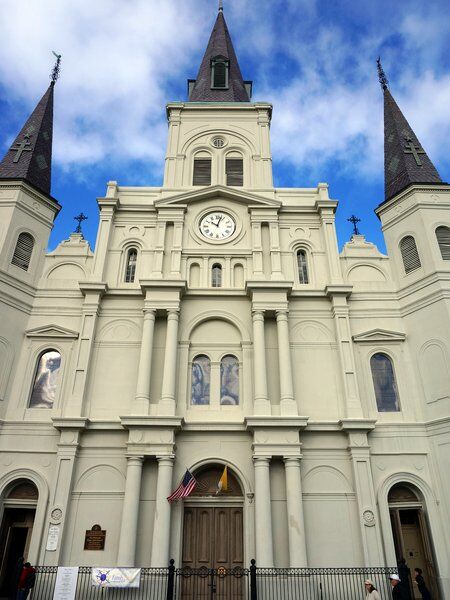
21st Century Damages
The cathedral's structure was tested once more during Hurricane Katrina in 2005. The storm's ferocious winds uprooted two towering oak trees in St. Anthony's Garden, causing damage to the ornamental gate and the marble statue of Jesus Christ.
Additionally the hurricane's severity caused extensive water damage and roof leaking that severely affected the Holtkamp pipe organ. While an electronic substitute was used temporarily, the organ was eventually sent back to Holtkamp for rebuilding. It wasn't until June 2008 that the refurbished organ, gifted by Elise Cambon, was reinstated.
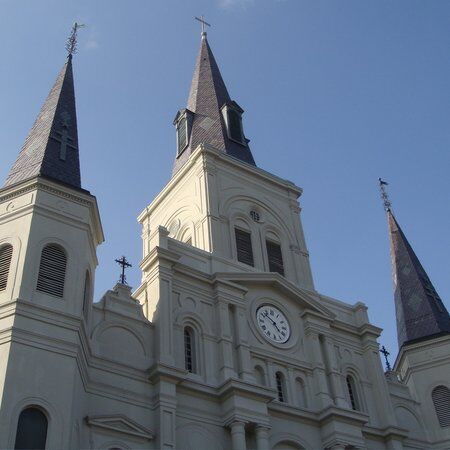
The St Louis Cathedral’s Design
Exterior Features
Viewed from Jackson Square, with the statue of Andrew Jackson in the foreground, the Cathedral’s towering centre spire rises amidst two smaller spires. Coupled with its symmetrical facade, St Louis’ exterior image is iconic, loved by artists and filmmakers worldwide.
Throughout its existence the cathedral has witnessed an architectural evolution reflecting its adaptation to the changing times. For example, after the Cabildo and Presbytère buildings nearby were heightened in 1847, the cathedral underwent a reconstruction to maintain its scale and importance. Architect J. N. B. de Pouilly's design incorporated a longer and wider nave, a central steeple of cypress and iron, and octagonal towers at each end of the facade.
Unfortunately, during construction, the central tower collapsed in 1850, leading to revisions supervised by Alexander Sampson. The final result was a three-storey building complete with paired Doric columns and pilasters.

St. Anthony's Garden
At the rear of the cathedral lies the St. Anthony Garden, a quiet space dominated by a statue of Jesus with outstretched arms. Illuminated by floodlights at night, the imposing shadow cast by the statue onto the cathedral adds to the awe-inspiring ambiance. Similarly, the front of the cathedral is lit up after dark, casting a powerful presence in the French Quarter.
Originally a cemetery, the St. Anthony Garden also features a marble obelisk atop a burial urn, moved from the Quarantine Station in 1914. Renovations in the early 1940s and post-Katrina redesigns by French landscape architect Louis Benech have transformed the garden into a retreat.
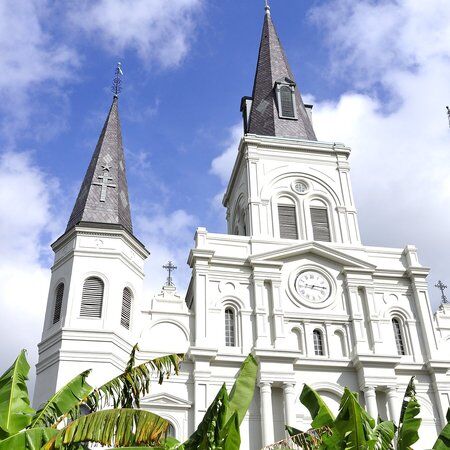
Interior Features and Renovations
St. Louis’ Cathedral is open to visitors of all faiths and backgrounds for self-guided tours of the interior highlights such as the stained glass windows, paintings, and Rococo-style altar. For those seeking religious items or souvenirs, the church's gift shop offers a variety of items, with proceeds supporting the maintenance and upkeep of the St Louis.
Over the years, the interior of the cathedral has undergone several renovations, including frescoes painted by Erasmus Humbrecht in 1872 and stained glass windows depicting the life of Louis IX, King of France.
One of the most striking internal features are the mosaics, a labour of love that spanned over 80 years. Comprising more than 41 million pieces of glass tesserae, these intricate artworks form the largest mosaic collection in the western hemisphere.
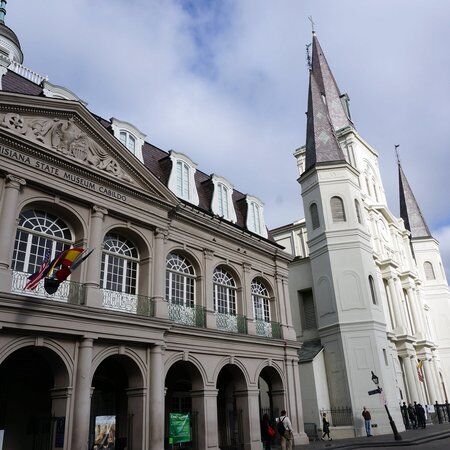
The Haunted Side of St. Louis Cathedral
Beyond its beauty and history, the St. Louis Cathedral also has grand tales about its supernatural guests. Among the most famous ghostly residents are Fr. Antonio de Sedella, known as Père Antoine, and Père Dagobert, both former clergy members whose spirits are said to linger within the cathedral's sacred walls.
Père Antoine, a revered cathedral priest, found his eternal rest within the church after his passing. Yet, his presence is said to still roam the grounds, particularly in the mornings. Many have reported sightings of Père Antoine walking along the alley adjacent to the cathedral, which was named in his honour. During Christmas Midnight Mass, parishioners and tourists alike claim to have seen him, holding a candle near the left side of the altar, adding an ethereal presence to the sacred ceremony.
Joining Père Antoine in the supernatural realm of St Louis’ is Père Dagobert, a friar who once called the cathedral his home. On rainy days, his voice is said to echo through the corridors, chanting the Kyrie.
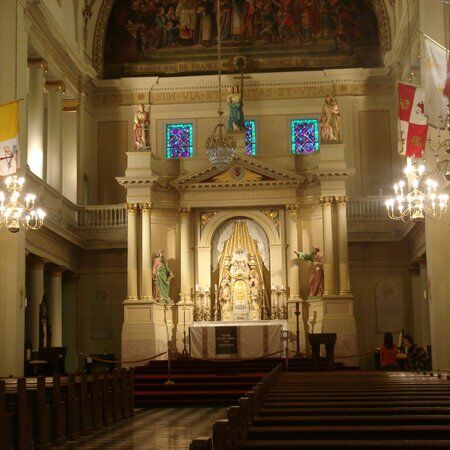
Our Thoughts…
Despite facing destruction in its past, including a dynamite bombing and the wrath of hurricanes, the St. Louis Cathedral remains as a continuous, reliable structure and sanctuary for Catholic worshippers in New Orleans. Its imposing structure commands attention from every angle, with a majestic and striking beauty that extends from its exterior to its interior walls.

Explore New Orleans with CityDays
The best way to discover more hidden gems around New Orleans is to take your time and, ideally, have a pre-planned route that takes you past all the noteworthy nooks and hidden gems.
We can help you there!
The City combines the fun of an outdoor treasure hunt with the historic facts and whimsical trivia of a walking tour.
Answer riddles, solve puzzles and learn more about London’s 2000-year-old history in a new and interactive way - plus you get 20% off food and drink at a historic pub chosen by us!
Take the stress out of planning your visit to New Orleans and book your adventure today!
Not visiting New Orleans this time? Don’t worry, you’ll find us all over the world.
